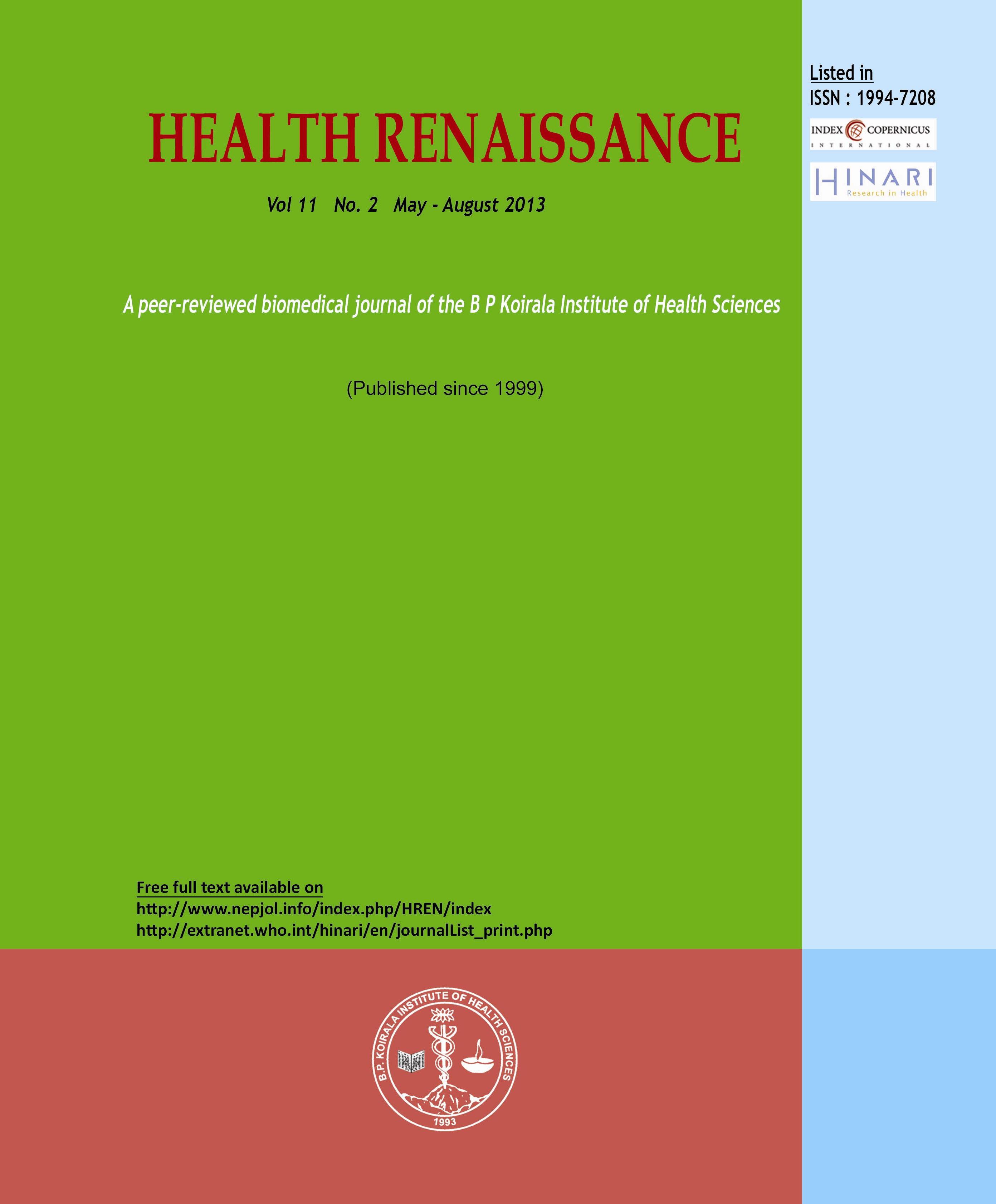Quality of life and pain prevalence in postoperative patients with oral malignancy- a prospective longitudinal study
DOI:
https://doi.org/10.3126/hren.v11i2.8219Keywords:
pain, quality of life, oral cancerAbstract
Background: Epidemiology of pain in oral cancer patients, the effects of curative treatment on this pain, and the impact that the pain experience may have on the patient.s quality of life is an overshadowed topic.
Methods: A prospective and descriptive study on prevalence of pain, with its impact on quality of life (QOL) was carried out in 36 diagnosed cases of squamous cell carcinoma (SCC) of oral cavity, and were treated with a curative intension. QOL assessment was done using a questionnaire followed by clinical examination at 6months and 12 months post-treatment. Pain was assessed using memorial pain assessment card and pain faces.
Results: 42 patients enrolled for this descriptive study but at the end of one year study period only 36 patients completed both the questionnaires. We observed that QOL in our patients, was significantly influenced by mode of soft tissue reconstruction, tongue mobility, speech intelligibility, cosmesis and oral competence. At 6months 16.7% patients reported no pain but at 12months this proportion increased to 52.8%. Severity of pain reduced significantly over time with significant improved pain relief. We observed significant correlation between pain, QOL and mood scale at 12months post-treatment.
Conclusion: This study has clarified and statistically confirmed some principles on the residual QOL for patients treated by surgical resection and flap reconstruction for cancer of the oral cavity already presented in the literature. Pain is common among those presenting with curable head and neck cancer. Pain can be reduced by curative treatment.
Health Renaissance, January-April 2013; Vol. 11 No.1; 125-133




